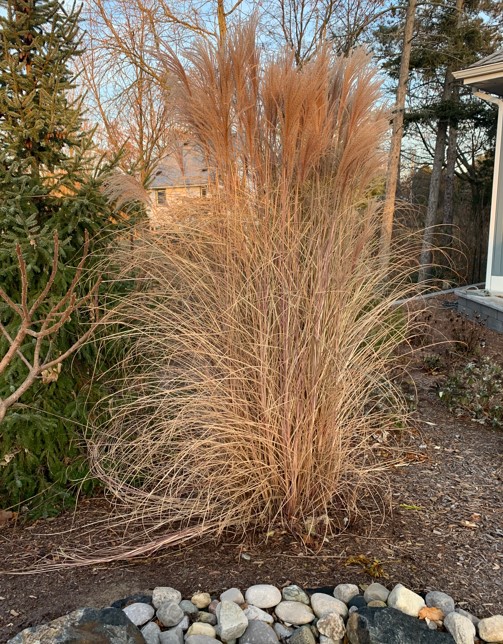Grasses
Garden Clippings for December 2, 2023
She hates them. I admire them. She won. I dug them out.
To be fair, the ornamental grass right behind the house was rather ugly. I planted it 3 years ago, and by now I have forgotten its name or variety. The minute it was planted Cheryl warned me that she would likely ask me to yank it in a few years. I was hoping that since it was expected to grow only a few feet tall, that it might be spared.
I was wrong. It took me half an hour to dig it out. First step was to cut back all the brown stems. Next, I set aside the cobblestone around it and pulled back the weed barrier fabric. The shovel had a tough time tackling the aggressive roots, but eventually the culprit was freed from the earth.
She was right. That small corner of the garden looks better now. Reminds me of the smart words Professor Vandersteen had to say in my Landscape Design Class at Michigan State: “A good gardener takes out more than she puts in”.
The Karl Foerster (Calamagrostis acutiflora) grass by the water garden is a different story. It was also planted 3 years ago, and it nicely fit the bill for a narrow upright grass to give a little privacy for the next-door neighbour. By now the Spruce behind are large enough that the well-behaved Karl Foerster can be given a new home. Unlike the first grass, digging up the Karl Foerster was a cinch and took two minutes to pop out of the ground.
Not all grasses are created equal. We have a row of 9 Little Bunny (Pennisetum alopecuroides) grasses in a tight spot by the shed who remain cute as a bunny. Little Bunny is a miniature perennial grass that forms a dense clump of finely textured stems growing only 18 inches high. In late summer through fall, its lovely silver plumes sway back and forth in the slightest breeze.
Many of the tall growing grasses can become a force to be reckoned with. Innocent looking when they are first planted, they can soon grow to 10 feet high and 3 or 4 feet wide. My neighbour four doors down has a few Chinese Silver Grass (Misicanthus sinensis Morning Light) making an impressive statement for his large corner lot, but would be too large for smaller gardens.
Grasses will always be high on my favorite plant list. Slow to sprout in spring, ornamental grasses begin to strut their stuff in mid-June once the soil has warmed up. By mid-July they are in their full glory, beginning to grow plumes. Grasses remain attractive through fall and into winter, when their brown stems remain upright, contrasting comfortably against the snowfall.
Other well behaved ornamental grasses to consider are Blue Fescue (Festuca glauca) with its delicate looking grey-blue stems that will not grow much more than a foot high. Blue Oat (Helictotrichon sempervirens) is slightly bolder yet remains only 24 inches high.
Japanese Forest Grass (Hakonechloa macra) is a favorite golden coloured grass taking on a mounding shape. Japanese Forest Grass is an oddity among its kindred folk because it grows in shade and likes water. Plant it at the front of a perennial border or in containers along with your annual flowers.
For a larger, showier grass, consider Zebra (Miscanthus sinensis Zebrinus) growing about 6 feet tall, with horizontal yellow stripes on bright green stems. Switch Grass (Panicum virgatum) is a native grass with upright stems growing just over 3 feet high. Its medium green foliage turns shades of yellow in fall, slowly turning beige in winter.


